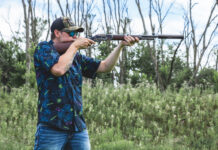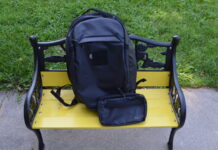Readers,
July has been a bloody month with highly publicized violence in the news, reactions towards police involved shootings. Dallas and Baton Rouge showed the extreme and lethal response to perceptions that the police officers in various cell phone recorded incidents, unjustly used lethal force against African American males. A narrative of police brutality, militarization, and excessive force has grown into a festering wound of mistrust and tensions on edge.
I’ve read many heated, angry, sad, and impassioned responses on both sides to the discussion of violence, and I’ve spent the better part of the month wondering if I can contribute anything to the debate that hasn’t been said.
I’ve found it.
Our topic for discussion today is going to be The Mystery of Force.
The topics surrounding the lawful use of force against others isn’t often detailed or discussed. Without an understanding of reasonable vs. excessive force, honest discussion cannot take place, so here we go.
We’re going to
-Define Use of Force (UoF)
-Cover the Levels of Force on the Use of Force Continuum and what the Continuum is used for
-Identify the categorization of subjects in UoF situations
-Define the “Reasonable” standard for both civilians and LEO/Military personnel.
Since these topics are tremendously under-discussed, it breeds misinformation. Misinformation breeds bad judgment, unrealistic expectations, and terrible potential perceptions. Let’s establish some perspective so we can have a grounded discussion.
What is a use of force?
While no single overriding definition exists, “the amount of effort required to compel compliance by an unwilling subject” covers it well.
In Law Enforcement circles this usually amounts to the detainment, for however long may be necessary, of a subject. For civilians UoF is generally centered on self-defense and not subject detainment but the core concepts are the same when it comes looking at UoF situations. The military UoF is very mission dependent, varying from a civilian like variant to a law enforcement officer (LEO) like variant, and into categories only the military can properly exercise due to their unique position as the literal projection of force for the nation.
Now that we’ve defined UoF let’s take a look at the Use of Force Continuum. The Continuum is a five or six-tier system (depending on the variation tiers 4 and 5 may be combined into a single tier 4 for the five tier layout of the Continuum)
The Tiers are
- Presence
- Verbal Communications/Commands
- Soft Physical Control/Open Hand Contact
- Hard Control/Aggressive Less Lethal
- Less Lethal Weapons
- Lethal Force/Deadly Force
I’m going to address each of the tiers from a civilian self-defense perspective, a military operational perspective, and finally a Law Enforcement Officer perspective since the Continuum is most widely applicable to their interactions. This is also to give readers’ specific guidance on how LEOs view UoF from this widely taught and law enforcement developed framework reference.
We will get to Reasonable and Justifiable a little later, bear with me as we illustrate the tiers.
Presence
The lowest tier on the force continuum is presence, the mere act of being at a location and using that to project a level of authority or interference towards possible aggression.
For civilians this tier is primarily about body language and situational awareness. You don’t project the image of an easy target therefore you are less likely to be targeted. You aren’t projecting authority over anyone or any group in a commanding sense but you are conveying the individual image of a hard target in order to discourage aggression.
You should strive to carry yourself this way at all times. Being aware, knowing entrance and escape routes for your current location, reading the body language of those around you looking for the physical warning signs of aggression and having a plan to act accordingly. If necessary you’ll run up the tiers to an appropriate level of force, which again we’ll cover as we go.
For military operations the application isn’t all that different from the civilian tier of presence. An armed patrol of Marines walking through a village looking to speak to the village leadership is using their presence to project authority and keep themselves safe. The heads up mentality, taking of key positions for security, and placement of mobile automatic weapons make a patrol like that a dangerous prospect to engage but the patrols mission isn’t a direct confrontation with anyone. The ‘Presence Patrol’ was a key tool in the wars in Iraq and Afghanistan to gather intelligence and keep Areas of Operation safer.
For Law Enforcement presence is easily one of their most often used UoF techniques. It’s constantly in use to a varying degree as the officers patrol. A patrol car running traffic on the highway is presence, even if they make no stops. Officers on foot at the fair or outside a sporting event. Officers walking a beat and just speaking with people. An Officer changing a tire for a stranded motorist on the side of the road or mowing a disabled man’s lawn on a quiet afternoon shift. All of these are presence.
Presence, especially in the civilian and law enforcement applications, is not always directed at an individual or group but can be a passive state among the general population. It’s the general refusal to be a victim and hard target mentality in the case of the former, and the general community police atmosphere promoting and projecting a safe communal environment is the latter. There doesn’t need to be active action beyond simply being around for presence. In contrast, an Officer arriving somewhere is a more active use of presence. The Officer may not actively engage anyone but a notable arrival will have an effect on everyone to some degree and deter many who do not want police contact or involvement, where otherwise they may have acted out differently.
Verbal Communications/Commands
The second tier is the first one that involves actively interacting with someone. Conversation, as well as active non-verbal communication like hand and arm signals, are tools we use more often then we often realize. We might wave somebody through a stop sign ahead of us. Equally we might tell someone “that is close enough” or speak to them and ascertain intentions through a closed door. These are forms of control, forms of force.
The civilian population, project personal authority, dealing directly with themselves. “Get off my lawn!”, “Step back, don’t come closer!” when subjects comply the confrontation ends and resets to tier 1.
The Military exact control over their AO or Area of Operation. This control, over seas, is not subject to much in the way of constitutional provision or restraint and is more subject to rules of engagement and the nature of the host nation. Troops stationed in Denmark on a mission among the general population will have next to no authority not granted to them by the Danes. However, the same unit in Al Anbar during the height of combat operations will have the authority to keep themselves secure as they see fit. They may order people from the road and clear it. They may order people to only take certain routes. They may order stops and searches on vehicles and carried items. If subjects are compliant this stays as tier 2.
The Police use verbal and directional commands all the time. The lights and sirens are the most notable non verbal, communicating either clear the way or pull over. “Step out of your car.” “Show me your hands.” “License and registration.” “Have you been drinking tonight?” “Have a seat over here.” All of these are verbal controls between an officer and subject. This is Law Enforcement’s 2nd most common, and as far as they ever hope to escalate on the tier of force.
Soft Physical Control/Open Hand Contact
The third tier is the first hands-on level of contact. It involves forcibly guiding, restraining, or deterring a subject. Grabbing someones arm to stop them or pull them along. Joint locks and pressure point techniques are at this level, as are handcuffs or other restraints. It’s physical control with a low probability of causing a subject any bodily damage.
Civilians using this level could be guiding their friend from a bar who isn’t really in the mindset to leave, pushing someone away who has gotten to close, using open hand martial arts techniques like trips or joint locks, or sitting on someone to pin them. This tier is useful if physical controls can feasibly prevent the escalation of a fight between possibly or formerly mutual combatants from crossing into the upper tiers.
Military use tier 3 with detainees and POWs, also on crowds during appropriate missions or interactions. Things like flex cuffs are routinely used as controls. Military members moving detained persons will always use positive control techniques for their safety. The ability to rapidly disable, immobilize, or forcibly direct someone detained is paramount and trip techniques, throws, and pressure point direction is standard. The subject will go where directed, how uncomfortable that is is usually up to the subject.
Law Enforcement has the most visible tier 3 force control, handcuffs. Arrest and detainment is an image ingrained in the American consciousness, positively or negatively. Everyone knows what handcuffs coming out from a police officer means. LEOs use a well arrayed set of techniques to keep themselves safe when physical control of a subject is necessary. They move hands and arms in particular manners giving them leverage, they place their legs and core where they have balance and the subject does not. They may leverage their handcuffs to brace a subject with only one cuff secured, an especially risky time for an officer using the cuffs.
Here we’re at the split. Between tier 3 and tier 4 on the Continuum there is a critical difference. The majority of illustrations you may come across on the UoF Continuum line out or color code the two sides to denote this difference. At tier 3 and below the subject of the confrontation isn’t aggressive or combative, even if they’re uncooperative.
Tier 4 and higher you are in combat.
Hard Control/Aggressive Less Lethal
Tier 4 is relatively easy to define. Put simply, you’re in a fist fight. The force used is no longer about physical control or restraint its about causing damage. Broken bones, missing teeth, heavy bruising are all high probability. The potential for this to become lethal is very real. Tier 4 is marked by restraint though it isn’t used to do deliberately devastating damage. The line is thin here though, especially with an untrained user.
For Civilians the only time tier 4 is easily definable is mutual combat. You have agreed to a fight. It is incredibly easy for such a situation to escalate beyond that. Someone trained in unarmed defensive fighting or the martial arts can more likely keep themselves at tier 4 deliberately, limiting damage and trying to compel the subject flee or submit.
Military Personnel use nearly the same outline as civilians; but they are more trained, however. Mission-dependent force is a reality, but this isn’t a level of force used very often.
For the Police this tier is something they want to get out of as quickly as possible and back to tier 3. Tackling a subject, using a hip toss or throw, or having to swing and strike a subject and cause probable damage is used when officers can’t safely use tier 3 because of subject resistance.
Less Lethal Weapons
Used in the same principle as tier 4 but a less lethal force multiplier is used. A taser, baton, pepper spray, or water cannon, for example, are force multipliers/less lethal weapons.
Civilians usually have to prove nearly life-threatening risk to justify tier 5.
The Military use less lethal in specific rules of engagement to support mission requirements but you won’t see a taser taken into combat operations.
Police Officers will use tier 5 force when it’s physically to dangerous to use tier 4. If an officer can’t safely approach a subject a taser, pepper spray, or riot shield could make the difference and allow officers to gain control.
Both tier 4 and tier 5 have a high probability of injury, LEOs having to employ tier 4 or 5 force are most often going to attempt a single overwhelming push in order to get subjects into a position to be physically restrained and then arrested or transported for medical attention as the situation warrants.
It should be understood by all that in these upper tiers, officer and bystander safety is considered more paramount than that of the subject or subjects.
Lethal Force/Deadly Force
Tier 6 force, regardless of how delivered, has a high probability of dealing severe sometimes irreparable trauma to the subject. It is used to produce an immediate stop from the subject.
Civilians use lethal force legally in response to an immediate lethal threat. Ability, Opportunity, and Immediate Jeopardy must be provable under objective legal criteria.
Military Units use lethal force legally in response to an immediate lethal threat. Within the parameters of the Rules of Engagement, troops can defend themselves with small arms or prosecute offensive operations.
The Police use lethal force legally in response to an immediate lethal threat. Every lethal force police encounter is subject to internal and judicial review to determine or eliminate possible misconduct and acquire lessons learned for the future. The scrutiny of Law Enforcement use of force incidents is the most stringent of the three groups.
How the Use of Force Continuum is applied
We’re going to narrow our focus now to Law Enforcement. The Continuum is not a step ladder, it is not taught to officers and deputies as a progression but rather as a measure of response. If an officer arrives on scene and the subject or subjects are determined to be at tier 1 or tier 2 levels on the continuum the officer or officers are going to respond with tier 2 or tier 3 as the situation warrants for safety and control. If a subject is at tier 4 or 5 the officer isn’t going to start at tier 1 and work up to tier 5 or 6, they will start at 5 or 6 and using that equal or one greater level of force compel the subject back to a controlled state. The level of force used is determined by the working observation of the responding officer or the subject and projected to be just above the level of force the subject is at to control them as quickly as possible and keep the officers and bystanders as safe as possible. An officer is not going to talk down a subject who is shooting or stabbing, they’re going to shoot them.
How do officers grade the people they interact with?
– Passive Compliant: a calm rational person who is following directions
– Passive Resistor: a calm rational person who is not following verbal directions but will usually comply with being physically led or directed (IE: asking someone to sit down and they refuse verbally but will not resist when led to a chair or seated on a curb)
– Active Resistor: A person, usually more agitated, actively ignoring both verbal and physical directions but not acting to cause harm to the officer, themselves, or bystanders
– Aggressive Resistor: A person actively seeking to cause harm to the officer, bystanders, or themselves to avoid detainment
The “Reasonable Standard”
Codified in 1989 with Graham v. Connor 490 U.S. 386 the reasonableness standard used for officers is judged by whether or not a plurality other officers presented with a similar situation would have used comparable force in a comparable manner. This is an evolving process using survey, analysis of past cases, and active discussion among officers across the nation attempting to improve the process on a constant basis.
In Conclusion
The framework here is to provide the readers with as accurate an illustrative method of analysis for Use of Force situations as I can in a short piece. Use of Force is a complicated and multifaceted topic that has numerous points to look at even before we put it into the real world split second decisions necessary by people on the sharp end.
As the saying goes, hindsight is 20/20
Keeping our objectivity and identifying actual changes, if any, we can make to applications of use of force can’t be made from a place of ignorance.
I’m hoping this shines some light on a murky subject.
Source Article from http://248shooter.com/index.php/mystery-force-understanding-use-force-reasonable-force-excessive-force/



